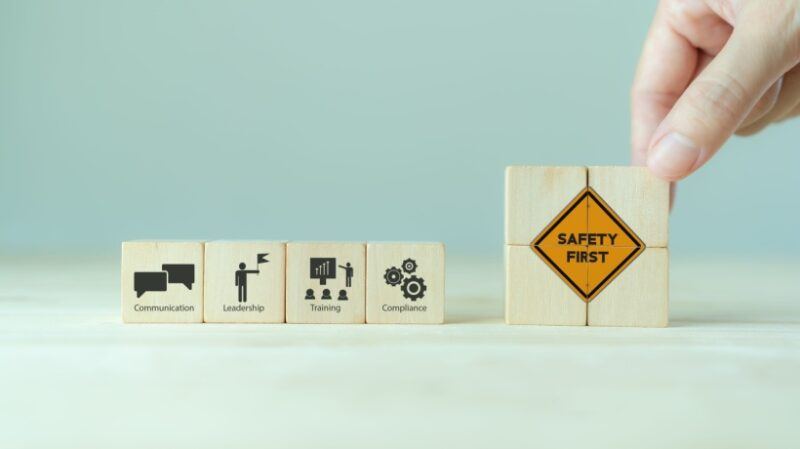

How Custom eLearning Is Transforming Training
Decades of safety training in the workplace are synonymous with compliance and employee well-being. But when it comes to the actual training process, printed manuals, in-person workshops, and one-size-fits-all presentations, most organizations struggle to keep their employees engaged. With the rapid changes in today’s technology-driven world, organizations are turning to innovative eLearning solutions that enhance safety training, making it more interactive, personalized, and effective.
The Evolution Of Safety Training
Traditionally, workplace safety training consisted of long lectures, static content, and paper-based assessments. Although this material contained very important information, it lacked engagement and adaptability. Since the employees found it difficult to remember such critical safety protocols, the chances of accidents and noncompliance were clearly increased in their workplaces.
Advances in technology now enable an organization to have more customized eLearning solutions that make safety training more immersive and impactful. Innovations help create more flexible, scalable, and efficient way to approach workplace safety education.
Key Innovations In Workplace Safety Training
Here are some key innovations driving the shift toward more effective and engaging eLearning-based safety training programs:
1. Microlearning For Better Retention
Microlearning will deliver modules in smaller, bite-sized bits. This can focus on a single safety topic, and the employees can learn on demand. This method will ensure high retention rates and ensure that the safety protocols become a part of day-to-day operations.
2. Gamification For Engagement
Gamification is changing the face of safety training by incorporating elements such as points, badges, leaderboards, and interactive challenges. Employees are more likely to stay engaged when training feels like a game rather than a lecture. Rewarding progress and healthy competition make gamified eLearning solutions enjoyable and effective for safety training.
3. Scenario-Based Learning For Real-World Application
In scenario-based learning, learners are exposed to realistic safety challenges and decision-making exercises. Because learners are located in context-rich situations, this approach encourages critical thinking, and problem-solving is also encouraged by this approach. Employees are given hands-on experience in workplace hazards, thus enhancing confidence and preparedness for real emergencies.
4. Video-Based Training
Traditional safety videos are passive and outdated. Interactive video training provides quizzes, branching scenarios, and clickable elements that keep learners actively engaged. Employees can interact with the content, make decisions, receive immediate feedback, and have a dynamic and effective experience learning about safety.
5. Virtual Reality And Augmented Reality For Immersive Learning
With the use of Virtual Reality (VR) and Augmented Reality (AR), safety training will be a completely different activity where real hazardous situations can be simulated in a controlled environment. Employees can experience breakouts of fires, machines breaking down, and chemical spills, without posing it a real threat. Thus, this enables the learners to learn the skills that facilitate the response in actual real-world emergencies.
6. AI-Based Personalization
Artificial Intelligence (AI) analyzes employee performance to deliver personal learning experiences by selecting and suggesting suitable training content. AI-driven eLearning platforms can quickly identify gaps, suggest modules, and offer instant feedback. Thus, adaptive learning guarantees that every employee learns the best safety training, depending on specific roles or learning levels.
7. Mobile Learning For Accessibility
With the new trend of remote work and mobile technology, employees need flexibility in accessing training materials. The mobile-friendly eLearning solution would allow them to complete safety training at any time of the day and at any location with their smartphone or tablets. This access does not stop learning but reinforces safety protocols without disrupting daily tasks.
8. Compliance Tracking And Reporting
The latest eLearning platforms are fully equipped with enhanced tracking and reporting capabilities. This makes it possible for the organization to track employees’ progress, evaluate knowledge retention, and make compliance reports effortless. The analytics enable employers to ensure that every need for safety training is satisfied and point out areas that must be improved.
Benefits Of Custom eLearning In Workplace Safety Training
1. Higher Engagement And Retention Of Knowledge
Interactive and entertaining content will ensure better retention and recall. In other words, if the training is both interactive and fun, employees will better retain safety procedures.
2. Economical And Scalable
Customized eLearning will ensure that no physical materials are utilized in training and that venues do not have to be rented; also, instructors’ costs do not add to the training bill. After being developed, eLearning modules can quickly be updated and deployed across different locations.
3. Organization-Wide Standardized Training
Conventional training methods vary from instructor to instructor. eLearning provides uniform training for everyone in the company, eliminating variation in safety knowledge.
4. Flexibility And Convenience
Custom eLearning ensures better knowledge retention with engaging, interactive content and provides a cost-effective, scalable solution that eliminates the need for physical materials or venues. It also offers employees the flexibility to learn at their own pace and convenience while ensuring standardized training and improved compliance across the organization.
5. Improved Compliance And Risk Reduction
Organizations can keep up with their regulatory safety requirements through automated tracking and reporting. Proper training reduces workplace accidents, liability risks, and related costs.
Conclusion
By investing in modern eLearning solutions like gamification, VR simulations, and AI personalization, organizations can not only enhance employee safety but also foster a culture of continuous learning and well-being, ensuring a safer and more productive workplace.